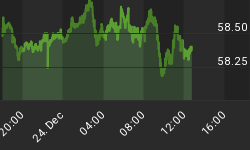Today's fresh 9-month high of $1.4627 in EURUSD coincides top of the rally in mid December (when FOMC moved to 0.25%) and the Lehman high in September (when Lehman collapse boosted gold and EUR). More below.
Unusual Forex Price Action
Current price action in currencies may be sending some interesting signals. Broad dollar damage is being accompanied by broad yen strength, which is an unusual pattern when risk appetite is on the rise. This suggests that dollar weakness is not necessarily a reflection of improved risk appetite but of secular weakness in the greenback (as a result of Chinese gold purchases and most importantly hedge funds testing key dollar support levels vs. EUR (1.4620) GBP (1.67) and AUD (0.8640-50s).
If the explanation that the greenback has become the sole candidate for financing carry trades into equities may be plausible, then this promises for emerging bounce at the next bout of equity selling. But with the higher lows displayed by the euro and high yielders (AUD, NZD) remaining a major part of the FX trading landscape, dollar bulls scan still find solace vs. GBP, CAD and CHF.
EURUSD hit a fresh 9-month high of $1.4627, coinciding with the key 61.8% retracement of the decline from the $1.6033 record high to the $1.2315 low. Euros broadening strength is also bolstered by inclinations towards a global exit strategy, in which case would support EUR due to the ECBs relatively less generous quantitative easing. Most interestingly, the $1.4610-20 region was the top of the rally in mid December (when FOMC moved to 0.25%) and mid September (when Lehman collapse boosted gold and EUR).

But the fact that oil had been unable to break above the key $72.40 resistance suggests caution with overinterpreting dollar weakness to be a result of improved risk appetite. In the event of a breach of 72.40, oil faces 73.40-45 as the enxt barrier, Aside from USDJPY falling to 7-month lows below 91, EURJPY, GBPJPY, CADJPY, AUDJPY and CADJPY are all under pressure, drifting at their own session lows. Yesterdays CADJPY HotChart is a manifestation of the yens rally against commodity currencies even during improved risk appetite. Our unchanged bearish calls for sub-90 USDJPY since October are materializing, especially as we characterized this pair to be a lose-lose due to the combination of broad USD-weakness and intermittent yen-strength.
Whether overall yen strength could be suggesting equities to be topping out may be supported by a decline in US bond yields and the persistent inability for oil to regain $73.00. The Nikkeis 0.7% decline overnight and golds inability to close above $1,000 could also offer signals about contained risk appetite.
Euro Never Looks Back
One of the most potent signs of technical strength in EURUSD has been the preservation of major lows on the monthly chart. Ever since reaching its all time lows in October 2000, EURUSD has never closed a month below prior major lows. The $1.2455 in March was above the $1.2387 low of Nov 08, which was in turn higher above the Oct low of $1.2328. This is not only a case of higher lows, but of previous lows never been breached. On a shorter-term horizon, $1.3740 continued to serve as a major support since May 38% retracement of the decline from $1.6050 high to the $1.2327 low. While we stick with our $1.57 target by year-end, (0.94 in EURGBP), were not yet ruling out a break below $1.37 and onto $1.32.

More recently, the stabilization of the euro has been among the most overlooked phenomena in financial markets, since the March lows. The lack of significant overhaul in Eurozone banks and the lingering threat from the impact of a banking failure in the Baltics were long described as the red flags to the euro and most EUR crosses.
But the two main forces to the euros solid showing have been the following:
1. Acting as the anti-dollar, the EURUSD has been the most immediate currency pair for punishing the dollars structural weaknesses (budget/deficit nearing 10.5%) and cyclical weakness (unemployment near 10% and foreclosures far from peaking). With the EURUSD pair accounting for 28% of all currency pairs, the bulk of these trades remains instrumental in moving the euro.
2. ECB monetary policy veered away from the quantitative easing of the Fed and the BoE, which not only produced zero interest rates but, gave the green light for FX traders to sell USD and GBP. Although the ECBs 1-year auction received a subscription of a record euros 4442 bln at 1.0%, subsequent auctions arent likely to draw amounts that are near half due to the self-sufficiency of the first auction.
















